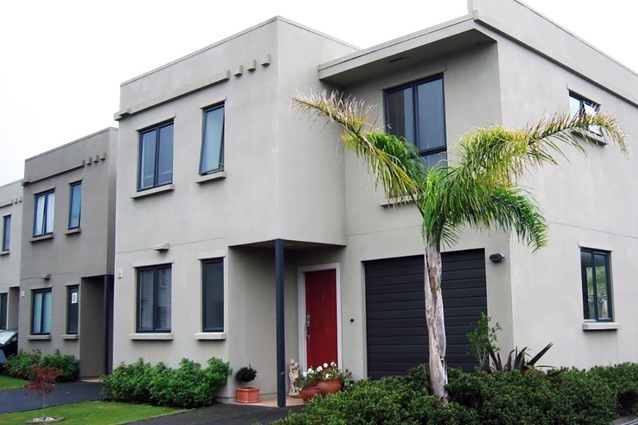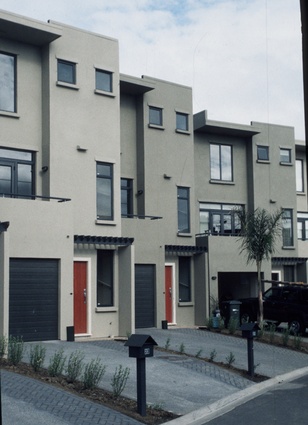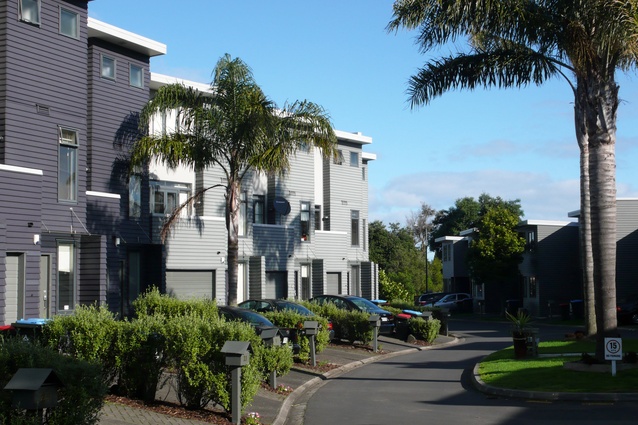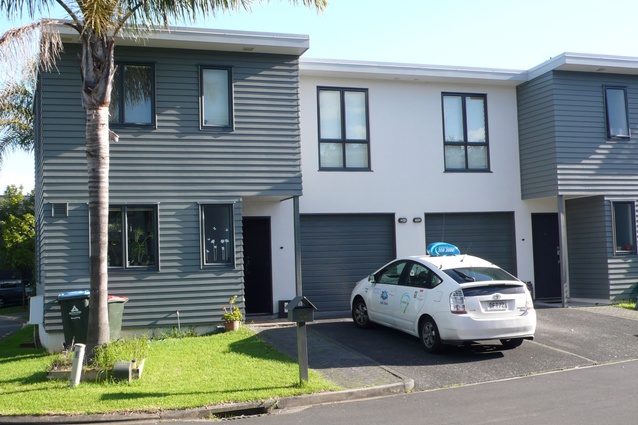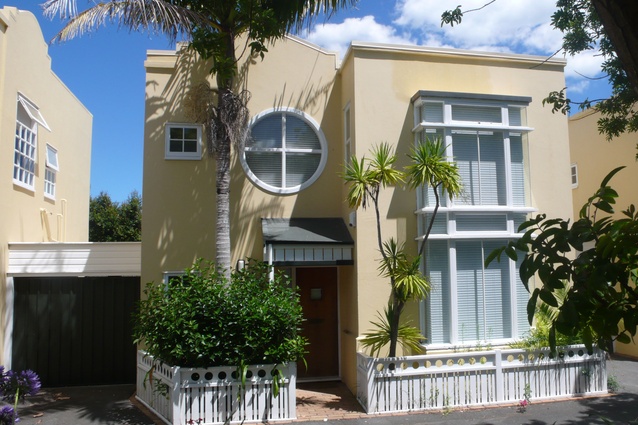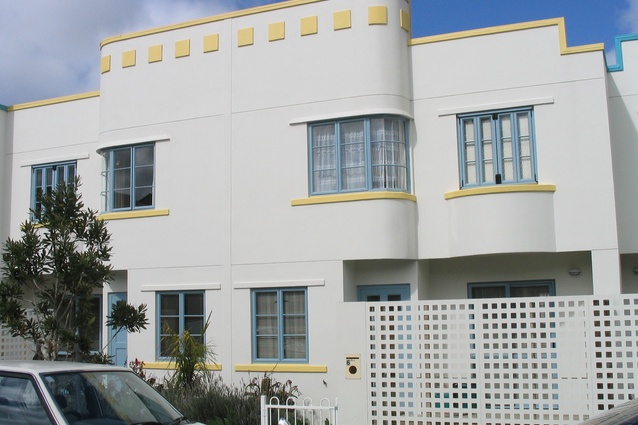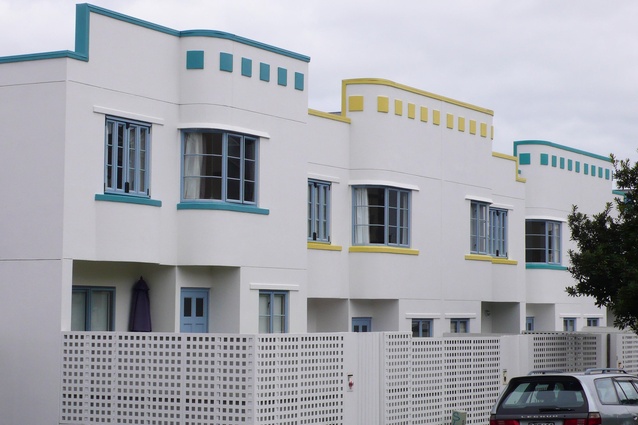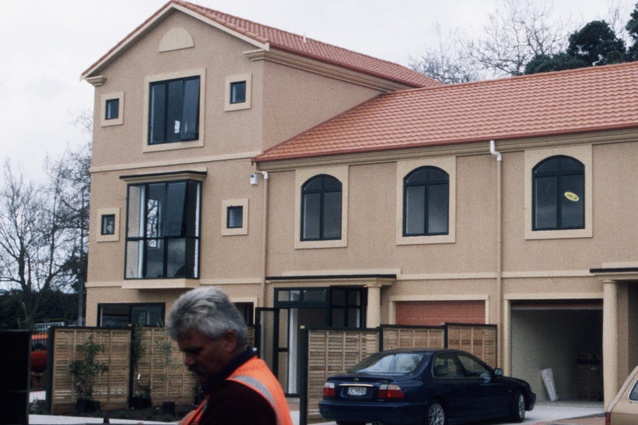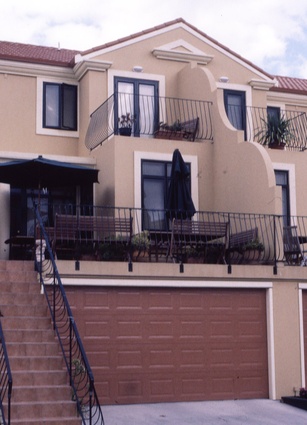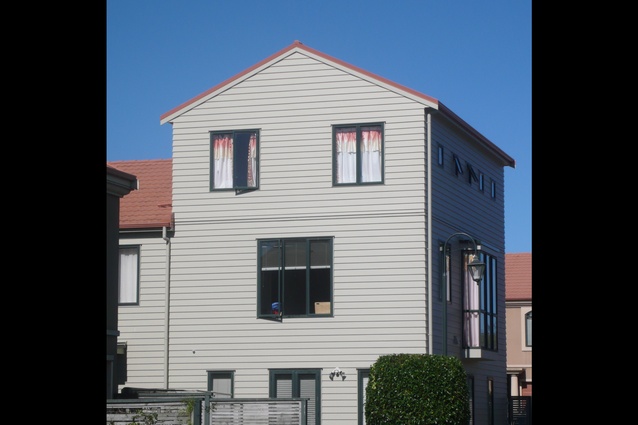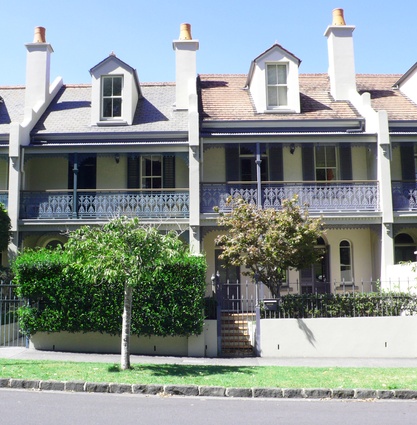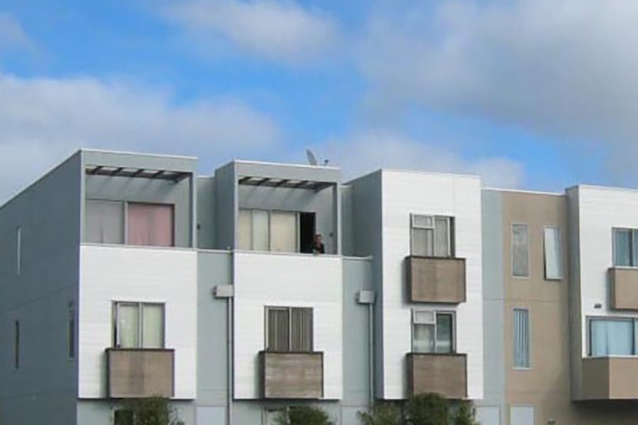From terraces to Deco - ‘first editions’ in Auckland’s high density housing
David Turner, Senior lecturer of Architecture at Unitec Institute of Technology, revisits the history of density in our biggest city.
Naming a design style is not a common practice for architects in the twenty-first century. However, it is interesting to reflect on the nameable styles of housing architecture that emerged between 1995 and 2006, when Auckland’s intensification programme presented architects with unprecedented design challenges.
The twentieth century evolution of housing design in Auckland and elsewhere in Aotearoa New Zealand largely relied on the single paradigm of a one-level timber framed detached structure. In its styling, the principal version saw a gradual simplification of decorative detail and material diversity, so that by 1990, housing design in new subdivisions had settled on an unostentatious modernist architecture.
In the 1990s, four agents of change all arrived at about the same time. The Brundtland Report in 1988 influenced the Resource Management Act of 1992 (RMA), which adapted concepts of sustainability to New Zealand’s conditions. These ideas consigned to history our standard practice of housing in sprawling suburbs. Then, when annual population growth in Auckland reached 3%, the compact city theory emerged to propose increased housing densities as the best solution for sustainable growth; and finally, architects became involved because the housing industry needed site planning skills and some suggestions for what these houses could look like.
The new environment of the RMA imposed few design controls; architects began to experiment with unfamiliar multi-unit typologies that were often beyond their practice experience of housing design. Inventive designs emerged in the first generation, often competitively styled to attract sales or to distract attention from other characteristics of higher density. They became a refreshingly different presence in many of New Zealand’s inner suburbs, marking the arrival of housing in another form.
Adopting style
Ken Smithies in his book ‘Principles of Design in Architecture’1 has argued that, for designers, the adoption of a style is a statement of intent: style creates a context, an association, and a location in time and place. Terms used in architecture to describe style (such as mannerist, neoclassical and modernist) are helpful for classifying particular forms of expression in buildings, with extended implications for scale, material, and possibly function.
But contemporary approaches to architecture do not see “a style” – a design solution pre-determined in a separate discourse by argument or example – as a useful design tool in the modern world, and since the days of the Beaux-Arts ateliers, notions of style have seldom been used in Western versions of architectural design education. Paradoxically, the perception of a building’s style is the way nearly everyone else approaches a conversation about architecture: architecture registers in the discerning public eye as a variety of building forms to which a named “style” – not necessarily a flattering one – can be attached.
Early examples of density
Higher densities were tested in some of Auckland’s inner-city suburbs in the 1980s and early 1990s. Small terraced private sector projects in Vermont Street, Ponsonby and on George Street in Parnell offered an alternative form of housing, using ex-industrial sites where developers were able to evade density controls. Both of these early examples adopted a style: in Parnell, a Victorian terraced form familiar from Sydney’s Paddington2 suburb of the 1900s, and in Ponsonby, a pastiche of sub-classical detail and rendered traditional facades, with a nod to Duany and Plater-Zyberg’s New Urbanists in Florida3. Their styles distinguished them from their neighbours, but identified them each as “housing”.
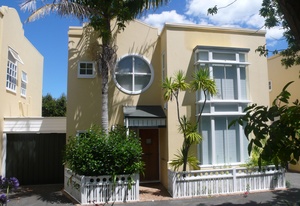
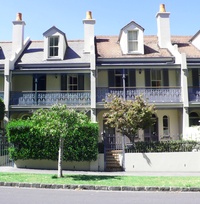
Variations in detail reduce the visual impact of repetitive façades, providing individuality to otherwise identical houses. More importantly, decorative elaborations help to disguise the density of the layout, which is double that of the immediate neighbourhood in both examples. The sense that the houses have their roots in styles that can be identified from experience, perhaps from travel overseas, off-sets the perception of high density: they register as legitimate forms of domestic architecture.
But these projects were not statistically significant. Auckland markets need tens of thousands of new houses. Architects needed to find house types to match the new density parameters, and design styles that would represent our domestic aspirations. For the developers, previously unthinkable densities were possible, and also desirable if new styles could be made attractive to buyers; the new models needed to be straightforward to build with existing skills and equipment, and they also needed to replicate suburban conditions as much as possible – many of the new residents would come from existing suburbs.
Mixed responses
New Zealand’s architects have thrived for decades on a housing design tradition of buildings as separate objects, and had no habit of approaching their work with contextuality in mind. So it is fair to record that in the mid-1990s, when building groups and the urban context became a design issue, solutions materialised rapidly but in a disorderly parade of styles.
Initial projects included the Sacramento scheme for 96 housing units in Botany, and two phases of terraced townhouses at Mary Street, Mount Eden, where about 180 three storey units were built between 1996 and 2000.
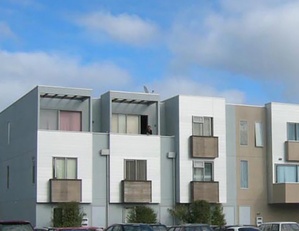
The architects in both projects used an under-stated “modernist-mediterranean” aesthetic expressed in smooth plaster finishes, earthy colours, parapets (no projecting eaves), and vertically-aligned fenestration.
In West Auckland, large-scale schemes in Waitakere City included the redevelopment of the Crown Lynn pottery site in New Lynn, for about 400 units. A range of styles emerged, some based on New Urbanist design principles: for example, the 100-unit “Tuscany Towers” project adopted the architecture of a medieval hill town in Italy.
In the 2003-2005 development of 83 terraced houses off Mount Lebanon Way, Henderson, seven builders distinguished between their separate projects by styles that included traditional Dutch Cape double-curved gables, Breton country town terraces with “stone” (polystyrene) fake quoins and plastered walls, another with Paddington style terraced units with wrought iron balconies at first floor level, and a short three storey terrace of colourful Art Deco houses with rounded bay windows and corners on their street façades. In Avondale there was a pastiche “Art Deco-Mexican” cul-de-sac of 45 units (now gated and re-named Saintly Close).
In practice, styles that became fashionable suited the aesthetic of parapets with metal cap-flashings and sheet claddings. Designers abandoned eaves projections in order to save space on-site under regulations that governed height-to-boundary relationships.
Regardless of style, densities between forty and fifty dwellings per hectare became the new standard for the two- and three-storey terraced typology where some suburban features such as individual garages and small patio-type urban gardens could be retained.
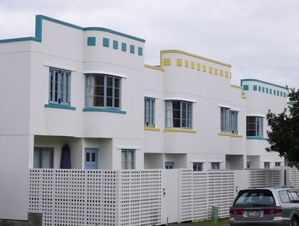
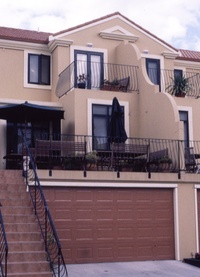
Springing a leak
The early period of post-RMA speculative higher density housing now registers as a bravura experiment in which competitive housing markets, public opinion, and the demands of real estate advertising campaigns all bore down on architects seeking new design solutions5. From the start, developers assumed that housing at increased densities would mainly attract investors and lower-income buyers.
Low costs were helped by keeping floor areas down to under 120 square metres and minimising private garden spaces. Initially, although the attraction of these developments was based on economy they also presented buyers with choices not seen previously in price6, and particularly in design styles, some of which were enticingly different, and in this suburban context, positively exotic.
Tragically, within a decade the adventurous reputation was devastated by the “leaky building” disaster, which followed soon after deregulation of the construction industry in the early 1990s7. This proved to be a calamitous error of legislation that undermined market confidence in property values for these higher-density developments, and discredited the entire intensification project as a system for housing supply.
Loss of character
By the mid-2000s a re-building programme was forced on almost all of the first generation projects, and few of the original styles have survived the process. Styles that signalled difference, and that revealed a genuine public interest in alternatives to the safe-but-dull suburban paradigm all but disappeared, as Body Corporate managers and their client communities minimised re-construction costs and replaced disintegrating external walls with traditional materials.
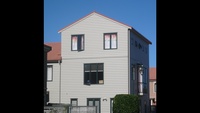
In the re-building programmes, interior layouts and site plans are largely the same but original styles have been purged, and the materials, surfaces and colours of mid twentieth century domestic architecture have reappeared. The double-curved gables of the Dutch Cape-styled terrace at 28-44 Winery Way in Henderson have given way to a blank end wall, and the terracotta-coloured faux-Tuscan style block in New Lynn is now an undistinguished cream-coloured series of weatherboard-clad terraces; Saintly Close in Avondale is re-clad, also mostly in weatherboard but painted in dark colours and with modernised external details that no longer mis-represent a Mexican village.
The seven houses in the Art Deco terrace at 2–14 Winery Way are an exception, as are the earlier examples (George St and Vermont St), which both preceded the use of construction systems that led to the “leaky building” disaster.
Learning from the past
Most of the audaciously different first generation of higher-density housing architecture has now gone from the suburbs. Auckland’s middle suburbs have lost the strange, alien, provocative and occasionally confusing (and in the event, short-lived) presence of many different styles of higher density housing architecture.
But public taste has matured, and public resistance to intensification has receded, subverted perhaps, in part, by the insistent logic of arguments in pursuit of sustainable city form. There is a sense of public fatigue with styling experiments that can be detected in the re-builds: regardless of density, we think our urban and suburban landscapes are rich enough, no longer in need of architectural fictions. Furthermore, the re-builds reflect a well-justified distrust (in the housing market) of a regulatory authority that permitted sub-standard non-traditional construction in the building industry, and then denied liability for the consequences.
These experiments can be seen in retrospect as a deviation, delightful for a brief period, but replaced now by more reliable materials, tighter construction regulations and practices, and simpler external forms of expression. Design since the mid-2000s has been increasingly confident in form, material, and colour, with prominent architects leading the way towards a coherent urban residential landscape. Arguably, however, present generations of house-builders and their architects owe a debt to their predecessors for the experiments they conducted in higher density styles.
This article is based on an earlier one published in December 2021 in Asylum, the Unitec Institute of Technology’s recently re-imagined journal.
Click here to read the full journal online.
1 Smithies, K. W. Principles of Design in Architecture. New York. Van Nostrand Reinhold 1981.
2 Duany, Andreas, Elizabeth Plater-Zyberk, and Jeff Speck. Suburban Nation: The Rise of Sprawl and the Decline of the American Dream. New York: North Point Press, 2001.
3 Turner, David, John Hewitt, Cesar Wagner, Bin Su, and Katherine Davies. Best Practice in Medium Density Housing Design. Housing New Zealand Corporation (Wellington: 2004).
4 Orsman, Bernard. “Intensified Housing Unpopular with Aucklanders.” New Zealand Herald (Auckland), 10 September 2004, News, A7.
5 Turner, David, and Bin Su. “A Classification Methodology for Medium Density Housing Based on Site Layout Analysis.” Fabricating Sustainability Wellington, ANZAScA, 2006.
6 Cumming, Geoff. “Buyers Search for a Backstop.” New Zealand Herald (Auckland), 11 September 2004, Weekend, Business, B6.
7 BRANZ. The Hunn Report Report of the Overview Group on the Weathtightness of Buildings. Wellington, 2002.

